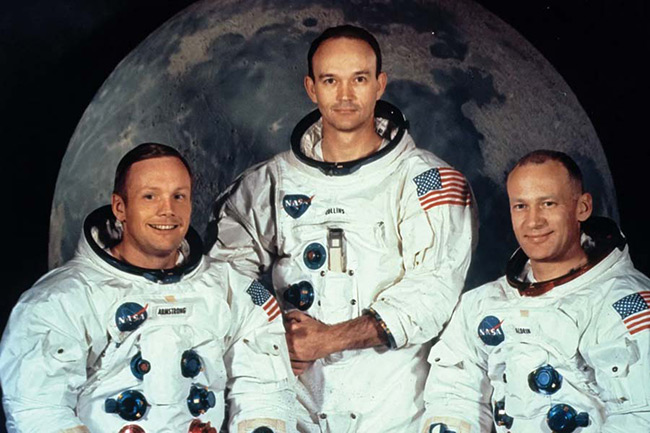Human Moon Missions
The Moon, Earth’s only natural satellite, has been a source of human curiosity and imagination since ancient times. But in the mid-20th century, a revolution took place — humanity not only looked at the Moon but actually set foot on it. The human Moon missions, especially the United States’ Apollo program, mark one of the most glorious chapters in modern science. Let’s explore its history, technology, achievements, and future plans in detail.
The Beginning of Moon Exploration
The race to the Moon began primarily during the Cold War, in the context of the political rivalry between the United States and the Soviet Union — a competition known as the “Space Race”.
The Soviet Union made the first move in 1957 by launching Sputnik-1, the world’s first artificial satellite, and in 1961, Yuri Gagarin became the first human in space. This challenged the United States to respond.
In 1961, U.S. President John F. Kennedy announced that, before the decade ended, an American astronaut would be sent to the Moon and brought back safely. This marked the beginning of NASA’s Apollo Program.
Apollo 11: The First Human Footprints on the Moon
On July 20, 1969 (July 21 in Bangladesh time), history was made. The Apollo 11 mission carried astronauts Neil Armstrong, Buzz Aldrin, and Michael Collins. Collins remained in lunar orbit, while Armstrong and Aldrin descended in the lunar module “Eagle” to the Moon’s surface.
A total of 12 astronauts walked on the Moon during six successful Apollo landings. Each mission involved two astronauts piloting the lunar module, while a third crew member stayed in the command module in orbit.
These missions took place over a span of 41 months, starting with Apollo 11 on July 20, 1969, and ending with Apollo 17 on December 14, 1972, when Gene Cernan and Harrison Schmitt made the last Moon landing. Cernan remains the last person to walk on the Moon.
Neil Armstrong stepped onto the surface first and famously said:
“That’s one small step for man, one giant leap for mankind.”
This moment is regarded as one of humanity’s greatest technological achievements.
Other Apollo Missions
After Apollo 11’s success, NASA launched six more Moon missions. Apollo 12, 14, 15, 16, and 17 all successfully landed on the Moon and conducted extensive scientific research.
Apollo 13 suffered a technical failure and had to return without landing, but it is known as a “successful failure” because the crew returned home safely.
The Apollo missions provided invaluable data on the Moon’s geology, materials, radiation, and even moonquakes — information still used by scientists today.
Technology and Challenges
Reaching the Moon was no easy task. It required advanced technology, complex rocket engineering, and extraordinary mental and physical preparation.
Key technologies included:
Saturn V Rocket – The most powerful launch vehicle in history.
Lunar Module (LM) – Designed for landing and returning from the Moon’s surface.
Command Module (CM) – The spacecraft where astronauts spent most of the mission.
Risks included radiation exposure, oxygen shortages, loss of control, and the unknown conditions of the lunar surface.
Significance of Human Moon Missions
The Moon landings were not only the fulfillment of a dream but also brought major scientific and technological benefits:
Deepened understanding of the Moon’s structure and history.
Analysis of lunar rock samples.
Advancements in spacesuit design, computer systems, radar, and communications.
Transformed human perspectives on space exploration.
These achievements boosted human confidence — proving that we can overcome immense challenges, even in space.
Hiatus and Return Plans
After Apollo 17 in 1972, no human has returned to the Moon. The halt was due to high costs, shifting political priorities, and focus on projects like space stations and Mars exploration.
Now, a new era of Moon exploration is beginning. NASA’s Artemis Program aims to send astronauts — including the first woman and first person of color — back to the Moon by 2025–26.
Future Goals
Not only NASA, but China, Russia, the European Space Agency, India, and private companies like SpaceX are planning to establish human presence and research stations on the Moon. Future objectives include:
Establishing permanent lunar bases.
Using lunar ice to produce rocket fuel.
Turning the Moon into a transit hub for Mars missions.
Exploring the Moon’s south pole, which has areas of permanent shadow and water ice.
Human Moon missions are not just technological feats — they are symbols of humanity’s relentless quest for knowledge. Over 50 years ago, humans left their first footprints on the Moon, and now we stand at the threshold of a new chapter. Future generations may visit, conduct research, and even live on the Moon. This chapter of history is both a source of pride and an inspiration for the future.
Sources:
NASA.gov – Apollo Program
Smithsonian Air & Space Museum
BBC History: Moon Landing
National Geographic – Artemis Mission Coverage

